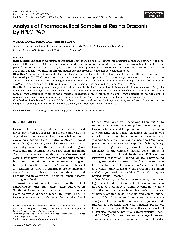摘要
Introduction: The quality evalution of traditional Chinese medicine (TCM) represents a particular challenge owing to the complexity of the matrix, which renders separation and identification of the individual components extremely difficult. In recent years, fingerprinting of TCMs has played a dominant role in quality control. Resina Draconis was authorised as a new TCM in 1991, but a satisfactory HPLC fingerprint method for this preparation has not yet been published.
Objective: To develop a simple and reliable protocol for the quality control of Resina Draconis using all HPLC-PAD method.
Methodology: The TCM was extracted with methanol at room temperature. Chromatography was carried out using a Lichrospher C-18 column eluted with a linear gradient of acctonitrile (A) and water containing 0.1% phosphoric acid (B), initially at 30:70 (A:B) and changing to 60:40 in 90 min. UV (PAD) spectra were acquired in the range 210-400 nm.
Results: Four chromatograms of samples of Resina Draconis obtained from different. pharmaceutical factories showed 20 peaks in common. The average chromatogram was taken as a template from which (lie correlation coefficients and cosine ratios of the samples were deter-ruined. Whereas the contents of individual components in each sample were different, overall the samples were extremely similar one to another, and the products from different pharmaceutical factories were consistent.
Conclusion: A reliable and validated HPLC method has been developed for the fingerprint analysis of Resina Draconis that call be applied for the quality control of this TCM.
- 出版日期2008-12
- 单位江南大学
